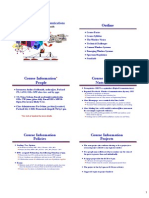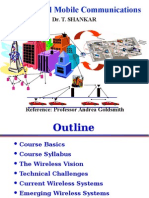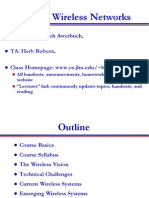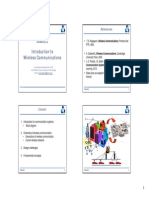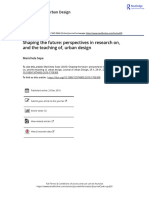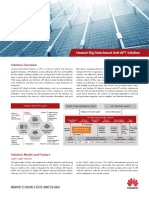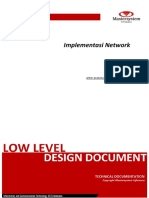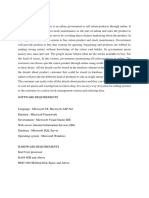EE 179: Introduction to Communications Professor Andrea Goldsmith
Professor Andrea Goldsmith
Outline
Course Information and Policies Course Syllabus Communication Systems Today
Next-generation Cellular Wireless Internet Access Wireless Multimedia Sensor Networks Smart Homes/Spaces Automated Highways In-Body Networks All this and more
Future Systems Design Challenges
Course Information
(see web or handout for more details)
Instructor: Andrea Goldsmith, Packard 371, andrea@ee, Ext: 56932, OHs: MW 1-2pm and by appt. My background Class Homepage: www.stanford.edu/class/ee179 TA: Aakanksha Chowdhery, achowdhe@stanford, OHs: T 5-6pm,
W 4:30-5:30pm; Th 12:30-1pm, 109 Pack: Email OHs: W 10-11pm
Class Policies
Exam policy:
Exams must be taken at their scheduled times. Exceptions only in very rare circumstances. Midterm will be the week of 2/21 (Presidents Day week):
G G
Class mailing list: ee179-students (automatic for registered students), ee179-staff for instructor/TAs, guest list available Discussion Section: M 4:30-5:30, room TBD. Book: Modern Digital and Analog Communications Systems Grading: HWs 30%, Midterm 30%, Final 40% Prerequisites: EE102a or equivalent
No class 2/21 (Mon); Regular lecture 2/23 (Wed) Midterm tentatively Wed 2/23; 5-6:30.
Final: 6/9 from 8:30-11:30am.
HW policy:
Assigned Wednesday, due following Thursday at 4pm sharp. Lose 25% credit per day late. Up to 3 students can collaborate on 1 writeup. All collaborators must work out all problems.
�Course Syllabus
Communication Systems Today (1) Key Concepts in Communications (1) Fourier Review and Examples (2) Energy/Power Spectral Density/Autocorrelation (2) Probability (1) Random Processes and Signals (2) Amplitude Modulation (3) Frequency Modulation (1) Digital Modulation (3) Course Summary and Hot Topics (1 Bonus Lecture)
Communication Systems
Provide for electronic exchange of multimedia data
Voice, data, video, music, email, web pages, etc.
Communication Systems Today
Radio and TV broadcasting (covered later in the course) Public Switched Telephone Network (voice,fax,modem) Cellular Phones Computer networks (LANs, WANs, and the Internet) Satellite systems (pagers, voice/data, movie broadcasts) Bluetooth
PSTN Design
Local Switching Office (Exchange) Local Line (Twisted Pair) Long Distance Lines (Fiber) Local Switching Office (Exchange)
Cellular System Basics
Geographic region divided into cells Frequencies/timeslots/codes reused at spatially-separated locations (analog systems use FD, digital use TD or CD) Co-channel interference between same color cells. Handoff and control coordinated through cell base stations
Fax Modem
Local exchange
Handles local calls Routes long distance calls over high-speed lines
BASE STATION
Circuit switched network tailored for voice Faxes and modems modulate data for voice channel DSL uses advanced modulation to get 1.5 Mbps
�Cell Phone Backbone Network
San Francisco
Local Area Networks (LANs)
01011011
BS
BS
0101
0101 01011011 1011 1011
New York
MTSO PSTN MTSO
LANs connect local computers Breaks data into packets
BS
Internet Internet
Internet
Packet switching (no dedicated channels) Proprietary protocols (access,routing, etc.)
Wireless Local Area Networks (WLANs)
01011011 0101 1011 Internet Access Point
Wireless LAN Standards
802.11b (Old 1990s)
Standard for 2.4GHz ISM band (80 MHz) Direct sequence spread spectrum (DSSS) Speeds of 11 Mbps, approx. 500 ft range
Many WLAN cards have all 4 (a/b/g/n)
802.11a/g (Middle Age mid-late 1990s) WLANs connect local computers (100m range) Breaks data into packets Channel access is shared (random access) Backbone Internet provides best-effort service
Standard for 5GHz NII band (300 MHz) OFDM in 20 MHz with adaptive rate/codes Speeds of 54 Mbps, approx. 100-200 ft range
802.11n (Hot stuff, standard completed in 2009)
Standard in 2.4 GHz and 5 GHzband Adaptive OFDM /MIMO in 20/40 MHz (2-4 antennas) Speeds up to 600Mbps, approx. 200 ft range Other advances in packetization, antenna use, etc.
�Wide Area Networks: The Internet
01011011
Data Network Protocols and the OSI Model
Internet
1011
LAN
Bridge
MAN
0101
Bridge
LAN Satellite and Fiber Lines
Many LANs and MANs bridged together Universal protocol: TCP/IP (packet based). Guaranteed rates or delays cannot be provided. Hard to support user mobility. Highly scalable and flexible topology Much work in reinventing Internet for current uses
Multihop Networks with OSI Model
Satellite Systems
Cover very large areas Different orbit heights
GEOs (39000 Km) versus LEOs (2000 Km)
Optimized for one-way transmission
Radio (XM, DAB) and movie (SatTV) broadcasting
Most two-way satellite systems went bankrupt
Expensive alternative to terrestrial system Niche applications (airplane Wifi; paging; etc.)
�Bluetooth
IEEE 802.15.4 / ZigBee Radios
Low-Rate WPAN Data rates of 20, 40, 250 Kbps Support for large mesh networking or star clusters
Cable replacement for electronic devices
Cell phones, laptops, PDAs, etc.
Support for low latency devices CSMA-CA channel access Very low power consumption Frequency of operation in ISM bands
Short range connection (10-100 m) 1 data (721 Kbps) and 3 voice (56 Kbps) channels Rudimentary networking capabilities
Future Wireless Networks
Ubiquitous Communication Among People and Devices
Everything wireless in one is on Burden for this performancedevicethe backbone network
San Francisco
Next-generation Cellular Wireless Internet Access Wireless Multimedia Sensor Networks Smart Homes/Spaces Automated Highways In-Body Networks All this and more
- Gbps rates, low latency, 99% coverage indoors and out
skrowten rosnes dna DIFR rewop wol no yliramirp si sucoF
Future Cell Phones
BS
BS
Internet Nth-Gen Cellular Phone System Nth-Gen Cellular
New York
BS
Much better performance and reliability than today
�Device Challenges
Analog and RF Components A/D Converters Size, Power, Cost Multiple Antennas Multiradio Coexistance
These challenges may someday be solved by a software-defined radio
A/D A/D A/D A/D DSP
BT
FM/XM GPS DVB-H
Green Cellular Networks
Cellular
Apps Processor Media Processor
WLAN
How should cellular systems be designed to conserve energy at both the mobile and base station Why green?
Energy consumption of cellular network growing rapidly with increasing data rates and users Operators experiencing increasing and volatile costs of energy to run their networks, especially in 3rd world countries Push for green innovation in telecommunications
Wimax
Multimedia Throughout the Home Without Wires
Performance burden also on the (mesh) network
802.11n Wifi (Gigabits/sec)
Wireless Sensor Networks
Smart homes/buildings Smart grid Search and rescue Homeland security Event detection Surveillance
Streaming video Blazing-fast data rates Seamless connectivity Coverage in every room
Wireless HDTV and Gaming
Energy (transmit and processing) is the driving constraint Data flows to centralized location (joint compression) Low per-node rates but tens to thousands of nodes Intelligence is in the network rather than in the devices
�Distributed Control over Wireless Links
Automated Vehicles
- Cars - UAVs - Insect flyers
Comm in Health, Biomedicine and Neuroscience
Body-Area Networks
Doctor-on-a-chip
-Cell phone info repository -Monitoring, diagnosis, intervention and services
The brain as a wireless network
- EKG signal reception/modeling
- Signal encoding and decoding - Nerve network (re)configuration
- Different design principles
G G
Control requires fast, accurate, and reliable feedback. Networks introduce delay and loss for a given rate.
Cloud
- Controllers must be robust and adaptive to random delay/loss. - Networks must be designed with control as the design objective.
Design Challenges
Hardware Design
Precise components Small, lightweight, low power Cheap High frequency operation
Text Images Video
Communication System Block Diagram
b1b2 ... m (t )
Source Encoder
Focus of this class
x (t )
Transmitter Channel
x (t )
Receiver
b1b2 ... m(t )
Source Decoder
System Design
Converting and transferring information High data rates Robust to noise and interference Supports many users
Source encoder converts message into message signal or bits. Transmitter converts message signal or bits into format appropriate for channel transmission (analog/digital signal). Channel introduces distortion, noise, and interference. Receiver decodes received signal back to message signal. Source decoder decodes message signal back into original message.
Network Design
Connectivity and high speed Energy and delay constraints
�Main Points
Communication systems send information electronically over communication channels Many different types of systems which convey many different types of information Design challenges include hardware, system, and network issues Communication systems recreate transmitted information at receiver with high fidelity Focus of this class is design and performance of analog and digital communication systems


